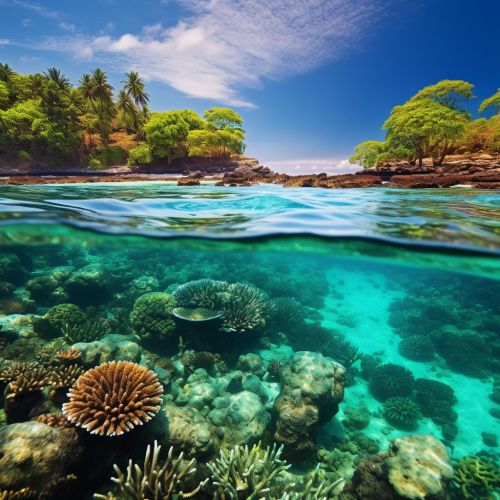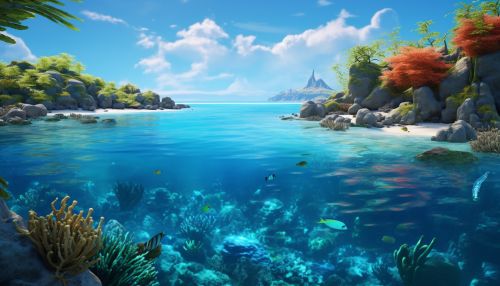Marine park
Overview
A Marine park is a protected area that preserves marine ecosystems and wildlife. These parks, often established by national governments or international conservation organizations, serve to protect marine biodiversity and provide a refuge for species that may be threatened by human activities such as fishing, pollution, and climate change.


Purpose and Importance
Marine parks play a significant role in the conservation of marine ecosystems. They provide a safe haven for marine species, many of which are threatened or endangered due to human activities. By protecting these areas, marine parks help to preserve biodiversity, which is essential for the health of our planet. They also serve as important research sites for scientists studying marine ecology and biology.
Types of Marine Parks
There are several types of marine parks, each with its own specific focus and regulations. These include:
- Marine Reserves: These are areas where all extractive activities, such as fishing and mining, are prohibited. They are often established to protect specific species or habitats.
- Marine Protected Areas (MPAs): These are broader than marine reserves and may allow certain types of activities, such as recreational fishing or tourism, while still providing some level of protection for marine life.
- Marine Sanctuaries: These are typically larger areas that are protected for their cultural, historical, or scientific significance. They may include shipwrecks, archaeological sites, or important breeding grounds for marine species.
Management and Regulation
The management of marine parks varies depending on the country and the specific park. In general, they are managed by government agencies or non-profit organizations, with the goal of preserving the park's natural resources while also allowing for sustainable use. This often involves monitoring the health of the park's ecosystems, enforcing regulations, and educating the public about the importance of marine conservation.
Challenges
Despite their importance, marine parks face numerous challenges. These include illegal fishing, pollution, climate change, and lack of funding for management and enforcement. Addressing these challenges requires international cooperation, as marine ecosystems do not adhere to national boundaries.
Case Studies
There are numerous examples of successful marine parks around the world. These include the Great Barrier Reef Marine Park in Australia, the Papahānaumokuākea Marine National Monument in the United States, and the Galapagos Marine Reserve in Ecuador. Each of these parks has its own unique challenges and successes, providing valuable lessons for marine conservation efforts worldwide.
Future Directions
The future of marine parks is closely tied to the broader challenges facing our oceans. As climate change and other threats continue to impact marine ecosystems, the importance of marine parks is likely to increase. There is also a growing recognition of the need to involve local communities in the management of marine parks, to ensure that conservation efforts are sustainable and equitable.
